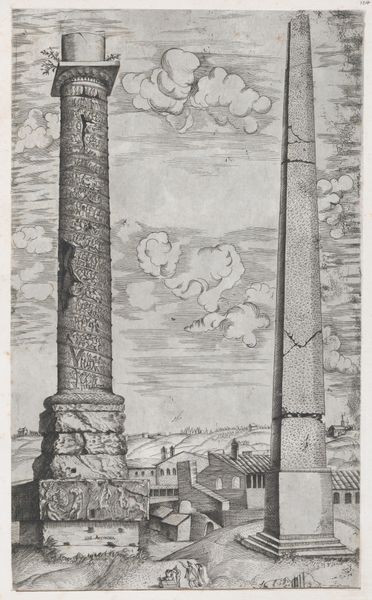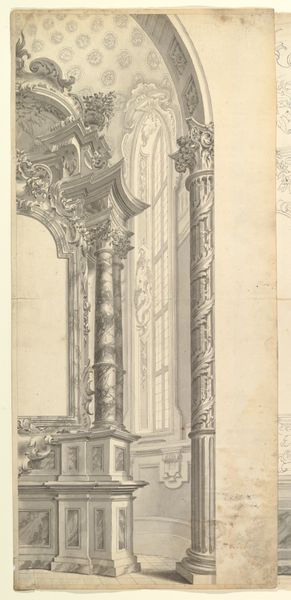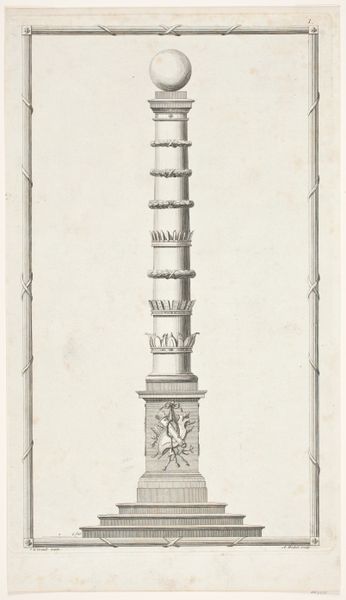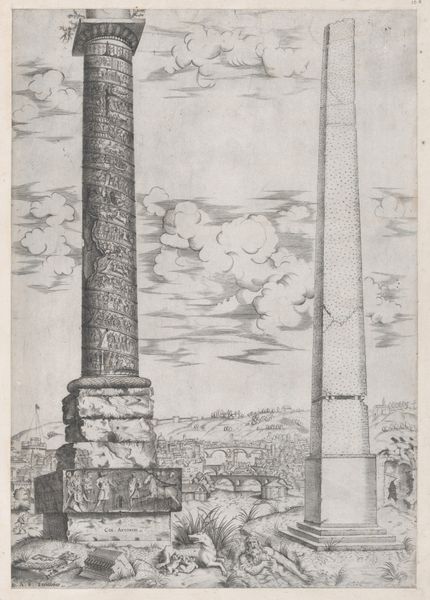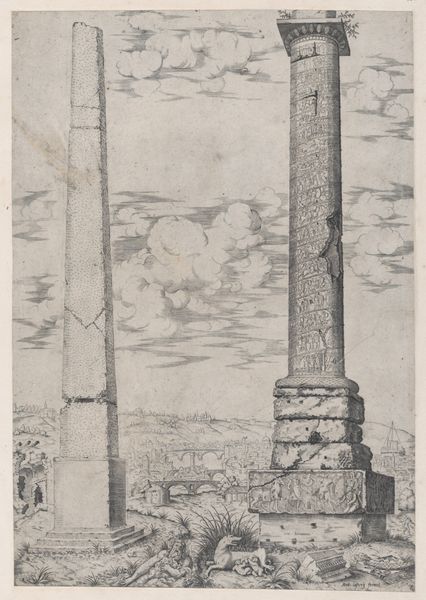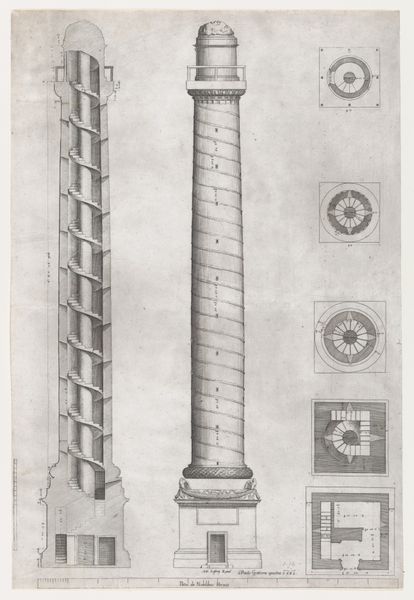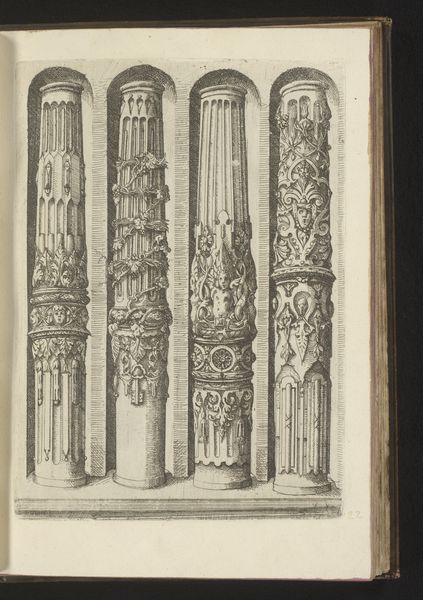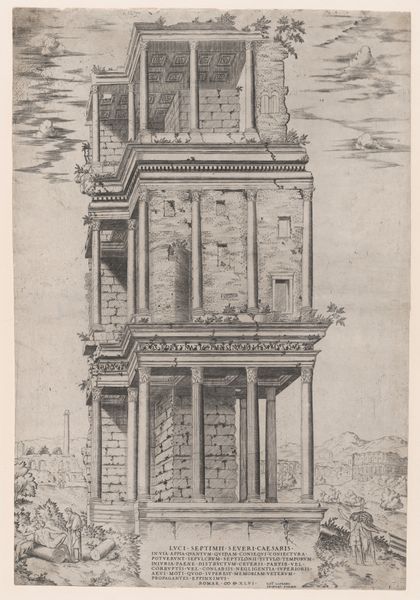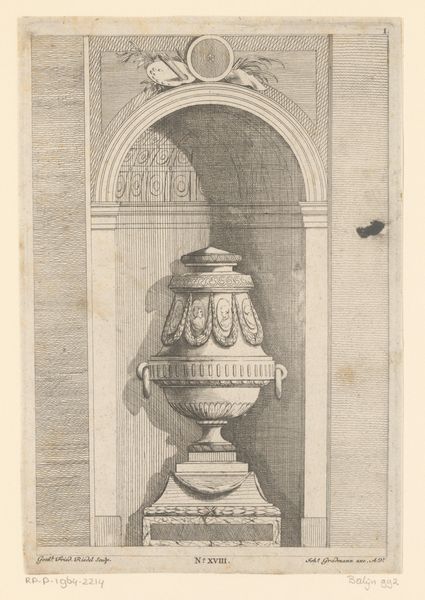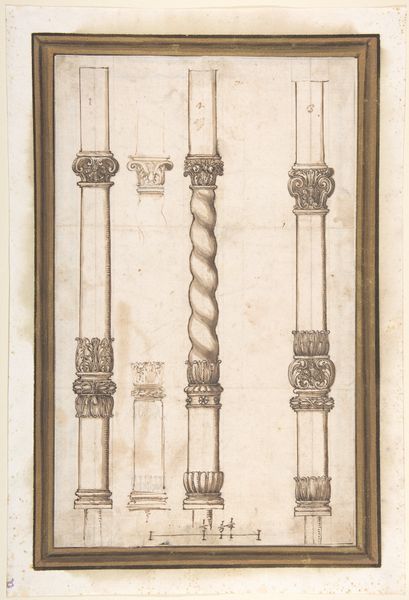
Speculum Romanae Magnificentiae: Column of Trajan 1530 - 1580
0:00
0:00
drawing, print, etching, engraving, architecture
#
drawing
# print
#
etching
#
etching
#
11_renaissance
#
ancient-mediterranean
#
column
#
engraving
#
architecture
Dimensions: sheet: 19 1/2 x 11 11/16 in. (49.5 x 29.7 cm) mount: 22 1/16 x 16 7/8 in. (56 x 42.8 cm)
Copyright: Public Domain
Curator: Looking at this print, my eye is drawn to the depiction of the Column of Trajan – it feels almost… foreboding, in its sheer size and meticulous detail. Editor: I see that immediately. This "Speculum Romanae Magnificentiae: Column of Trajan" produced between 1530 and 1580 by an anonymous artist is fascinating, particularly the stark contrast of the grand column with the almost clinical architectural plans flanking it. The cool execution mutes any celebration of power, doesn’t it? Curator: Precisely. The column itself, though ancient in origin, is rendered here with such precision that it transcends its historical context. It becomes a symbol of something… lasting, perhaps even oppressive. I find the careful etching of the spiraling frieze especially evocative. It reminds me of the endless cycles of history itself, a narrative literally carved in stone. Editor: That’s the crux of it, isn't it? While the image speaks of permanence, it can also be interpreted as a critique of the Roman Empire's legacy. This wasn’t produced during Trajan’s rule, of course. This image was created centuries after, when understandings of empire shifted considerably. Curator: The anonymous authorship is significant too. It suggests that the message of the artwork might be more important than individual fame. We have to remember that symbols, and visual representation, they outlast emperors and their empires. They tell more profound stories over vast swathes of time. The architectural diagrams of this print, almost skeletal renderings, serve as symbolic counterpoints— blueprints reduced to mere forms, hinting at the hubris of building such monumental structures. Editor: Right, this image freezes the ambition that led to conquest into these static renderings. And who did that conquest serve, in the end? Who benefits from these supposed achievements etched into stone? And whose voices and bodies were erased in the process of building and decorating? Curator: Your interpretation really brings forward questions around power, legacy, and the selective nature of historical narratives. Editor: It's these kind of questions that surface when confronting these images, isn't it? This work allows for such complex interplay between historical pride and critical re-examination. Curator: Absolutely. This "Speculum Romanae Magnificentiae," in all its stark glory, has shown us both the awe and the questioning that architectural symbols can elicit. Editor: Indeed. It urges us to continue examining these artifacts critically, to challenge the narratives they present and to listen to the silenced voices that echo within them.
Comments
No comments
Be the first to comment and join the conversation on the ultimate creative platform.
